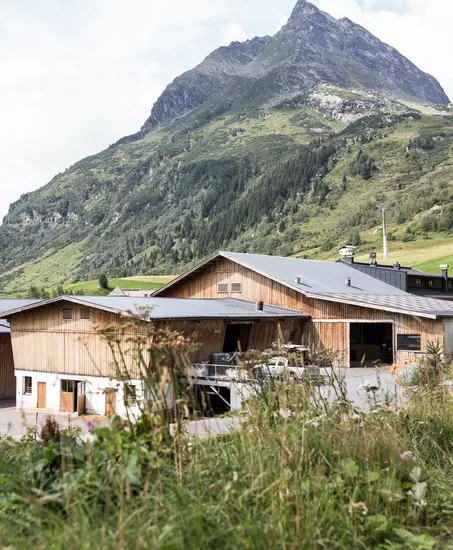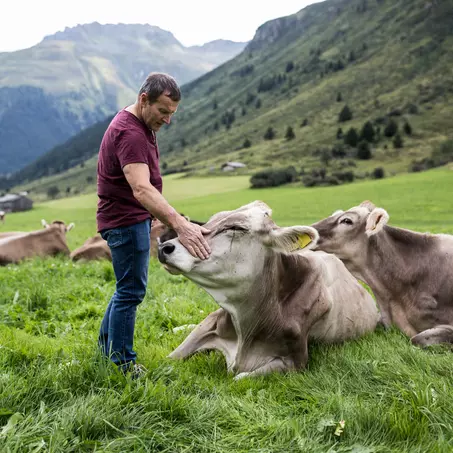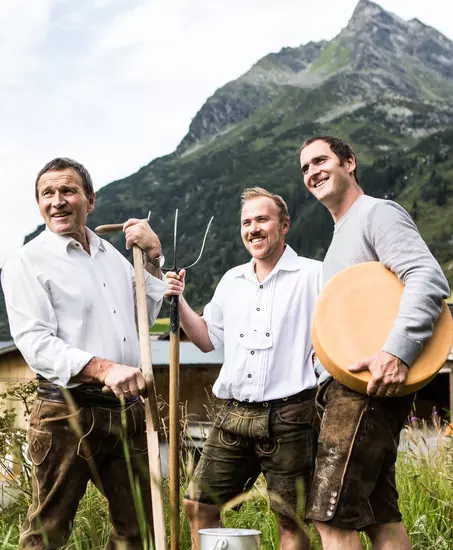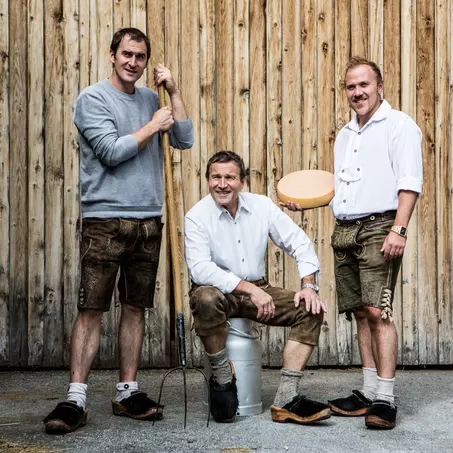Made on our own farm
Award-winning cheese
When producing their own cheese, Hermann and Patrick Huber focus both on quality and passion. You can taste it. And this is rewarded, too.
The International Cheese Olympics take place annually in Galtür. More than hundred dairymen and -women whose herds and flocks feed on alpine pastures in the European Alps meet and field their outstanding produce. A jury tastes all the fantastic kinds of cheese, scores them and awards the best cheese makers with the dairyman's harp in gold, silver and bronze.
Hermann and Patrick Huber, the team uniting two generations of the Hotel Almhof, produce various cheese specialities at the Faulbrunnalm. With them, they are regulars on the winner's podium of the International Cheese Olympics. And of course, not only the jury there but also our guests can enjoy their outstanding and highly renowned cheese both in our hotels as well as at home, as you can order our cheese for your check-out date.
High-Quality cheese and
natural alpine farming
For Hermann Huber, chef of the Hotel Almhof's renowned cuisine, two features are absolutely essential when it comes to food: high quality and their regional origin. And you can taste both. In his culinary masterpieces created in the kitchen of the Almhof and in his cheese alike.
Together with his son Patrick he produces various kinds of cheese applying the principles of natural alpine farming. And they convince the jury of the International Cheese Olympics every year again. For example, in 2018 the two of them were awarded the gold medal - or rather the gold diaryman's harp, four times and also received one diaryman's harp in silver. Their award-winning specialities are of course also part of the dishes served in the Huber Hotels.
Producing cheese is not a piece of cake
Rather than that it's a masterpiece of craftsmanship
Hermann and Patrick Huber are masters at this craft. The fresh milk - today usually modern milking systems are used to milk the cows - is warmed up in the cheese pot. Then they acidify the mild and add rennet, a set of enzymes produced in the stomachs of calves, so that the milk will curdle.
Cutting, forming &
bathing in salt
It takes a few steps until the cheese is ready to eat.
Firstly, the gel-like curd is cut with a dairyman's harp, separating it into solid curds and liquid whey; the smaller the curds, the harder the cheese will be. Then the curd is warmed up to a maximum of 52 °C, formed and pressed. In this step, the rest of the whey drives out. Now the fresh cheese is put in a salt bath where it absorbs salt; this does not only influence the taste but also more liquid is drawn from the cheese. Thus, the cheese becomes harder; additionally, a rind grows.
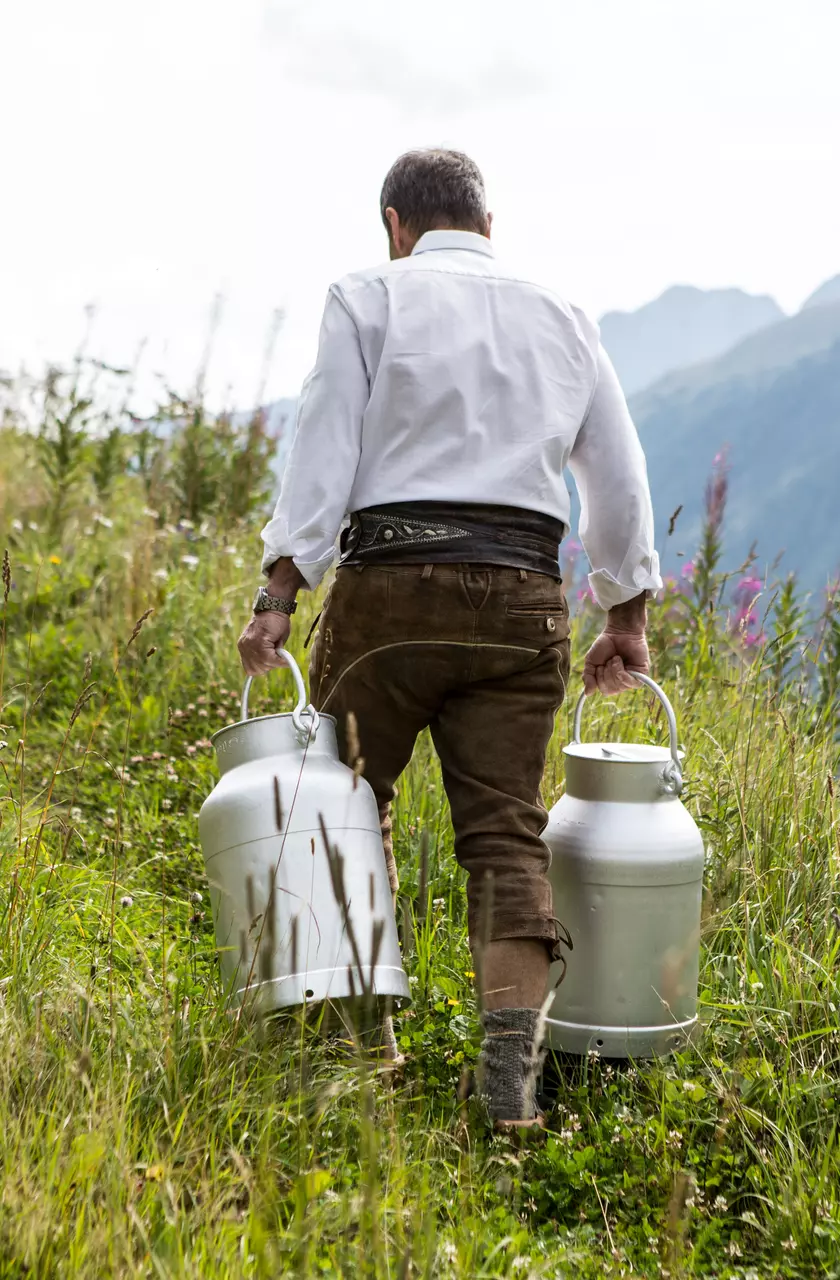
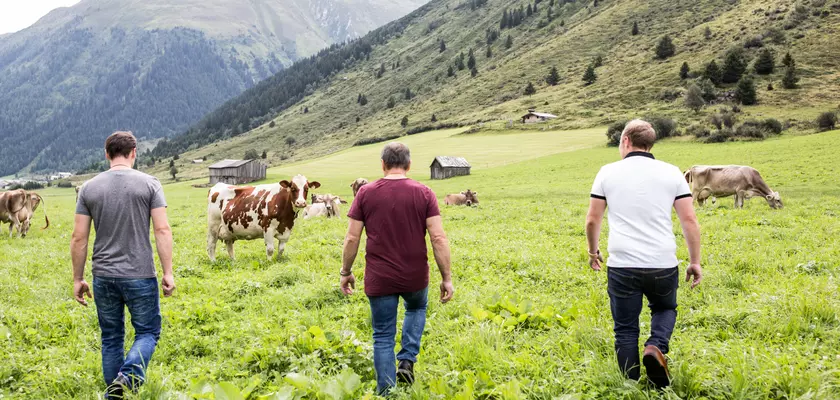
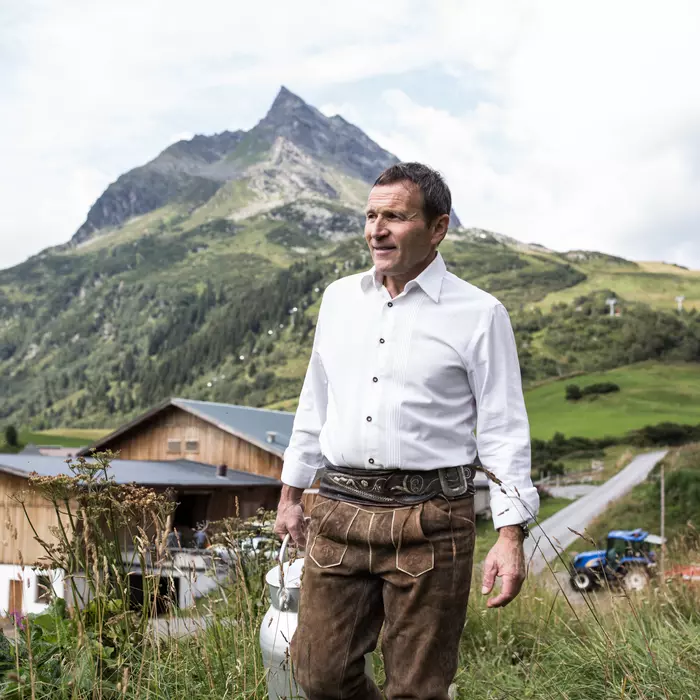
Fermenting, resting, ripening.
Where do the holes in the cheese come from? They are formed in the process of fermentation. While it ripens the cheese gets the taste typical for its kind. And during that time the cheese receives a lot of attention: it benefits from being turned and washed regularly. How aromatic and strong, but also how mild and delicate the cheesy creations taste, well, this is something you should really try out yourselves.
